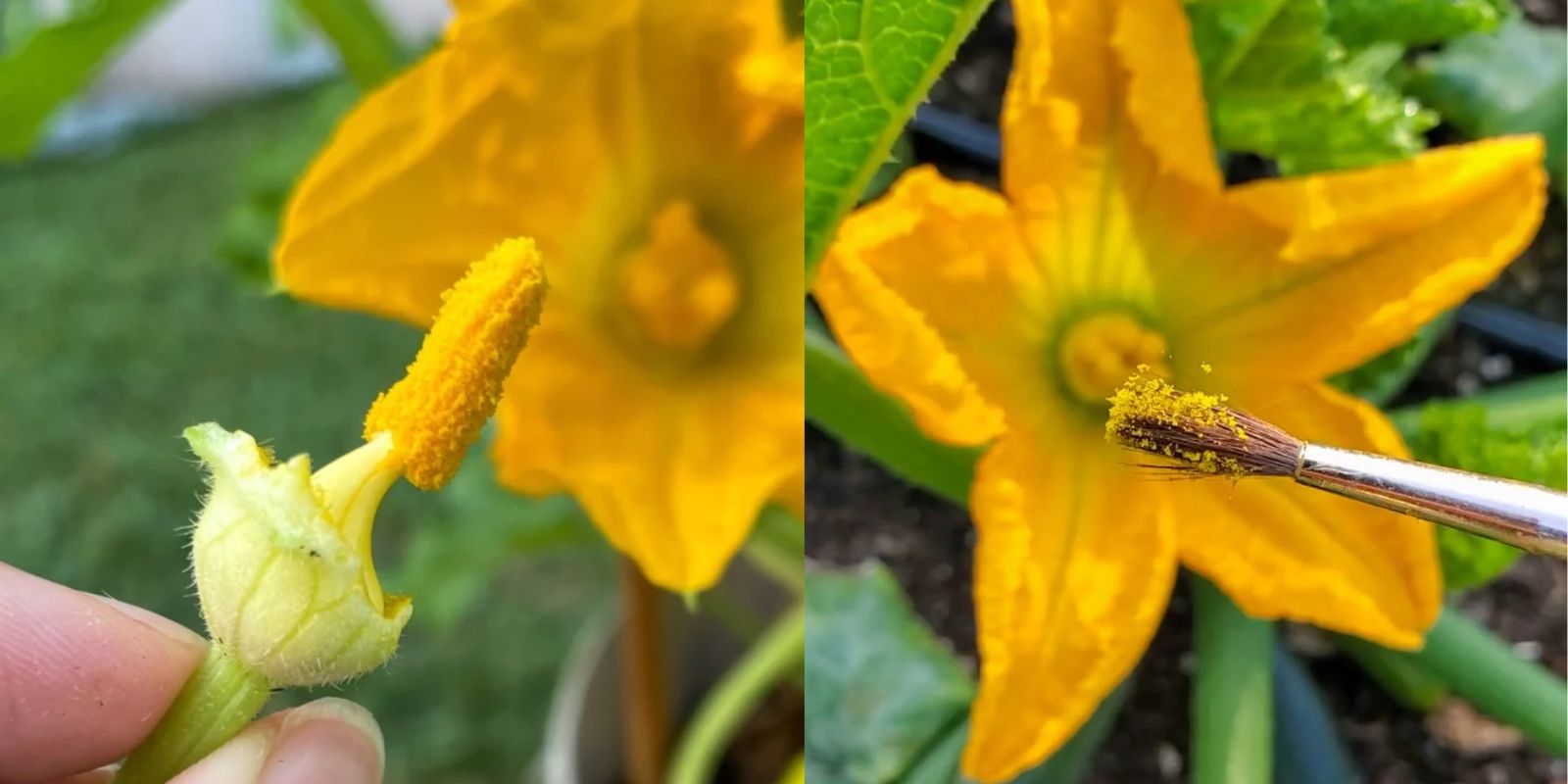Introduction
Squash plants, whether they’re summer squash, winter squash, or pumpkins, are a favorite among gardeners for their prolific yields and versatile uses. However, to ensure a successful harvest, especially in environments where natural pollinators might be limited, hand pollination of squash flowers becomes a crucial technique. Hand pollinating squash flowers not only boosts your yield but also ensures that you get the most out of your garden. This detailed guide will walk you through the steps of hand pollination, its importance, and tips for optimal results, so you can enjoy a bountiful squash harvest.
1. Understanding Squash Flowers
1.1 Male vs. Female Flowers
Squash plants produce two types of flowers: male and female. Knowing the difference between them is essential for successful hand pollination.
- Male Flowers: These flowers have a long, slender stem and are typically found in clusters. They contain the pollen necessary for fertilization.
- Female Flowers: These flowers have a short, thick stem and a swollen base, which is the developing fruit. The stigma in the center of the flower is where pollen must be deposited.
1.2 Pollination Basics
Pollination is the process where pollen from the male flower is transferred to the female flower’s stigma, enabling fertilization and fruit development. In nature, this is often done by bees and other pollinators. When these natural pollinators are scarce, hand pollination ensures that the process occurs efficiently.
2. Why Hand Pollinate?
2.1 Benefits of Hand Pollination
- Increased Yield: Hand pollination helps ensure that more flowers are fertilized, leading to a higher yield.
- Control Over Pollination: You can directly control which flowers are pollinated, reducing the chances of incomplete or failed pollination.
- Compensating for Lack of Pollinators: In urban areas or during certain times of the year, natural pollinators may be scarce, making hand pollination a valuable skill.
2.2 When to Hand Pollinate
Hand pollination should be done when squash flowers are in bloom, typically early in the morning when the flowers are open and pollen is viable. Male flowers usually bloom before female flowers, so you may need to wait until the female flowers appear.
3. Step-by-Step Guide to Hand Pollinating Squash Flowers
3.1 Gather Your Tools
Before you begin, gather the following tools:
- A small, soft brush or cotton swab
- A pair of scissors (optional, for cutting flowers)
- Clean container (optional, for collecting pollen)
3.2 Identify Flowers
- Locate Male Flowers: Look for male flowers with a long stem. These flowers will usually be found on the plant before female flowers.
- Find Female Flowers: Identify female flowers by their swollen base and shorter stem.
3.3 Collect Pollen
- Remove a Male Flower: Gently twist off a male flower from the plant or cut it with scissors, ensuring you don’t damage the flower itself.
- Extract Pollen: Use a soft brush or cotton swab to gently collect pollen from the stamen of the male flower. You can also gently tap the flower over a clean container to catch the pollen.
3.4 Transfer Pollen
- Prepare the Female Flower: Locate a female flower that is open and ready to receive pollen. Gently open the petals if necessary.
- Apply Pollen: Use the same brush or cotton swab to transfer pollen from the male flower to the stigma of the female flower. Make sure the pollen comes into direct contact with the stigma.
3.5 Repeat as Needed
- Regular Pollination: Continue the process of hand pollination throughout the blooming period to ensure that all female flowers are fertilized.
- Monitor the Flowers: Check regularly for new female flowers and repeat the pollination process as necessary.
4. Tips for Successful Hand Pollination
4.1 Timing is Key
- Morning Pollination: Perform hand pollination in the morning when flowers are most open and pollen is fresh. Flowers usually close in the afternoon, reducing the chance of successful pollination.
4.2 Be Gentle
- Handle Flowers Carefully: Avoid damaging the delicate flowers and pollen. Use a gentle touch when collecting and transferring pollen.
4.3 Keep Tools Clean
- Prevent Cross-Contamination: Clean your brush or cotton swab between different flowers to prevent transferring pollen from one plant to another.
4.4 Encourage Natural Pollinators
- Attract Pollinators: While hand pollination is effective, encouraging natural pollinators such as bees can further enhance pollination rates. Plant flowers that attract bees and avoid using pesticides.
5. Troubleshooting Common Issues
5.1 Incomplete Pollination
- Problem: If fruits are not forming or are misshapen, it might indicate incomplete pollination.
- Solution: Ensure thorough pollen transfer and try pollinating more flowers.
5.2 Flower Drop
- Problem: Female flowers might drop off without setting fruit.
- Solution: Verify that pollination is occurring and check for any environmental stressors.
5.3 Pests and Diseases
- Problem: Pests or diseases can affect flower health and pollination.
- Solution: Regularly inspect plants for pests and diseases and apply appropriate treatments.
6. Conclusion
Hand pollinating squash flowers is a rewarding technique that can significantly enhance your garden’s productivity. By following these steps, you ensure that your squash plants receive the attention they need to produce a bountiful harvest. Whether you’re dealing with a lack of natural pollinators or simply want to take control of the pollination process, mastering hand pollination will lead to more consistent and fruitful results.
Embrace the Art of Hand Pollination!
Apply these techniques and enjoy the satisfaction of seeing your squash plants thrive and produce delicious fruits. Share your experiences and inspire others to enhance their garden yields!
Hashtags:

